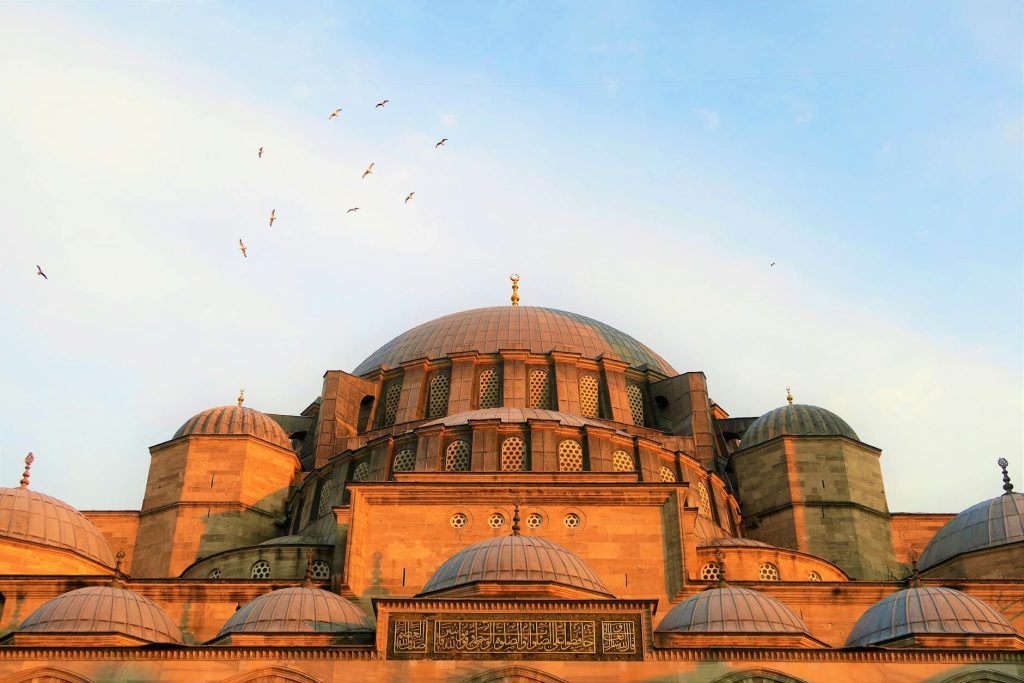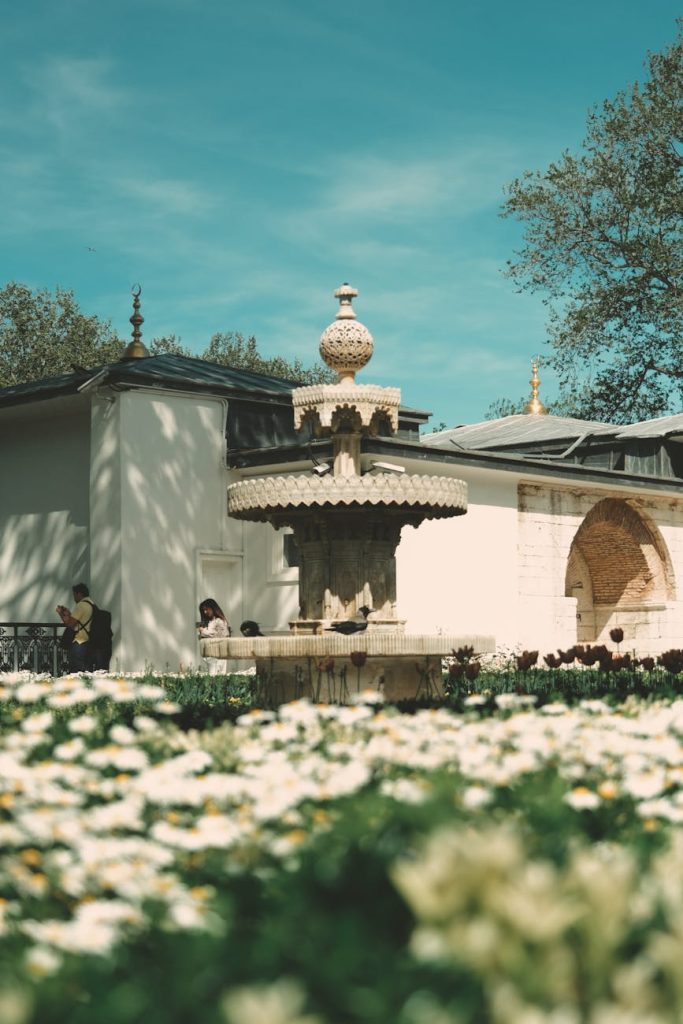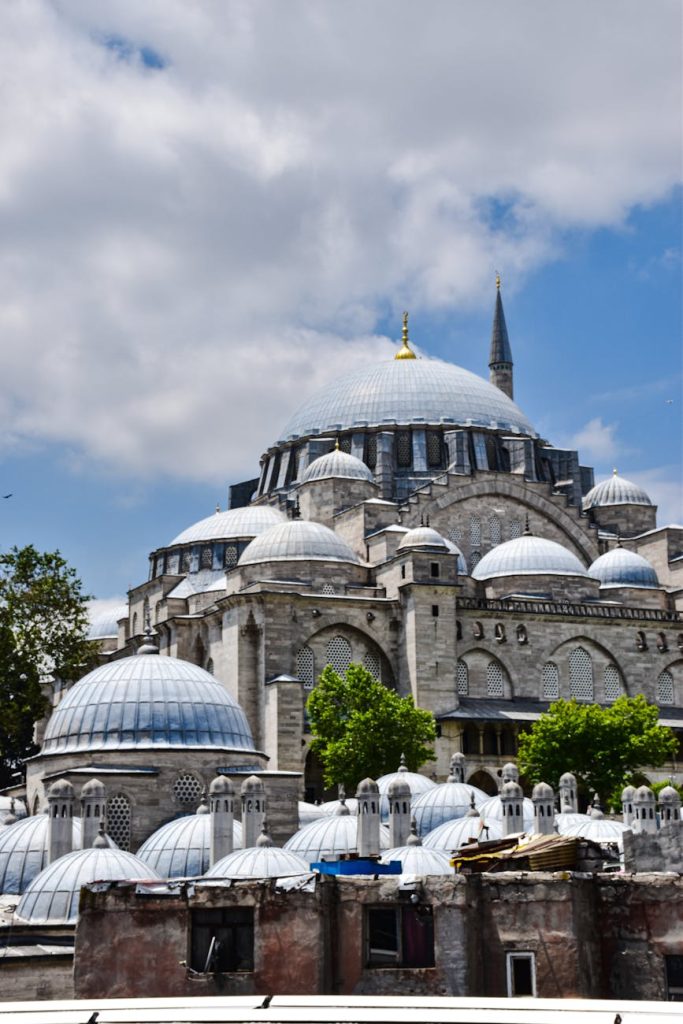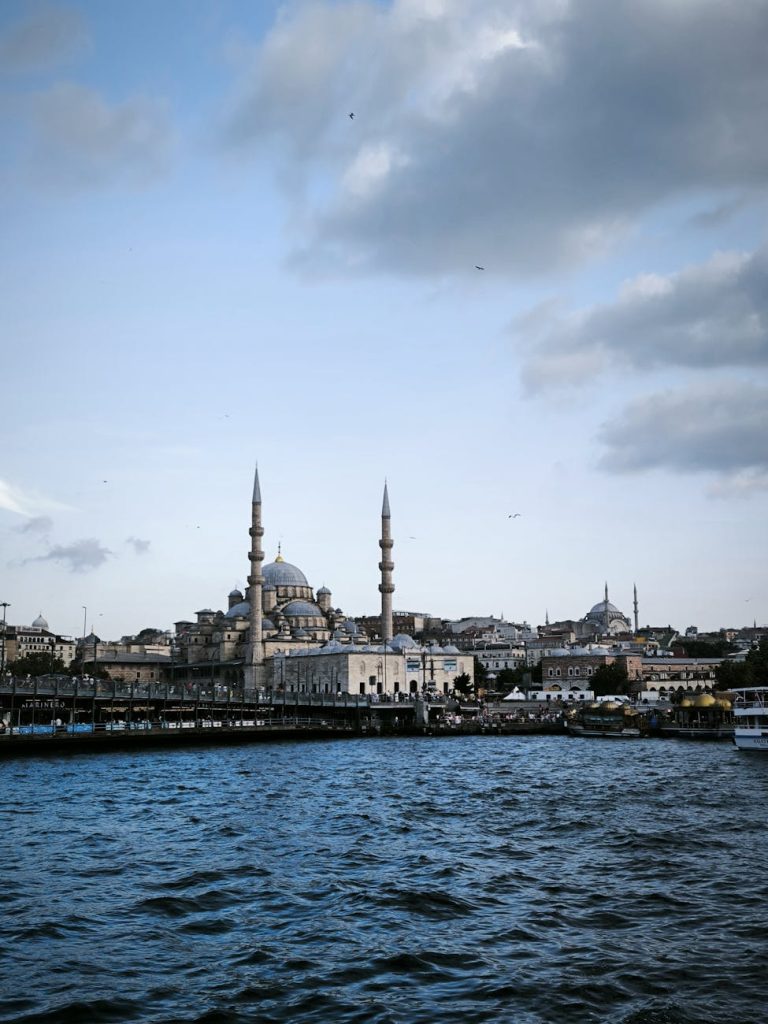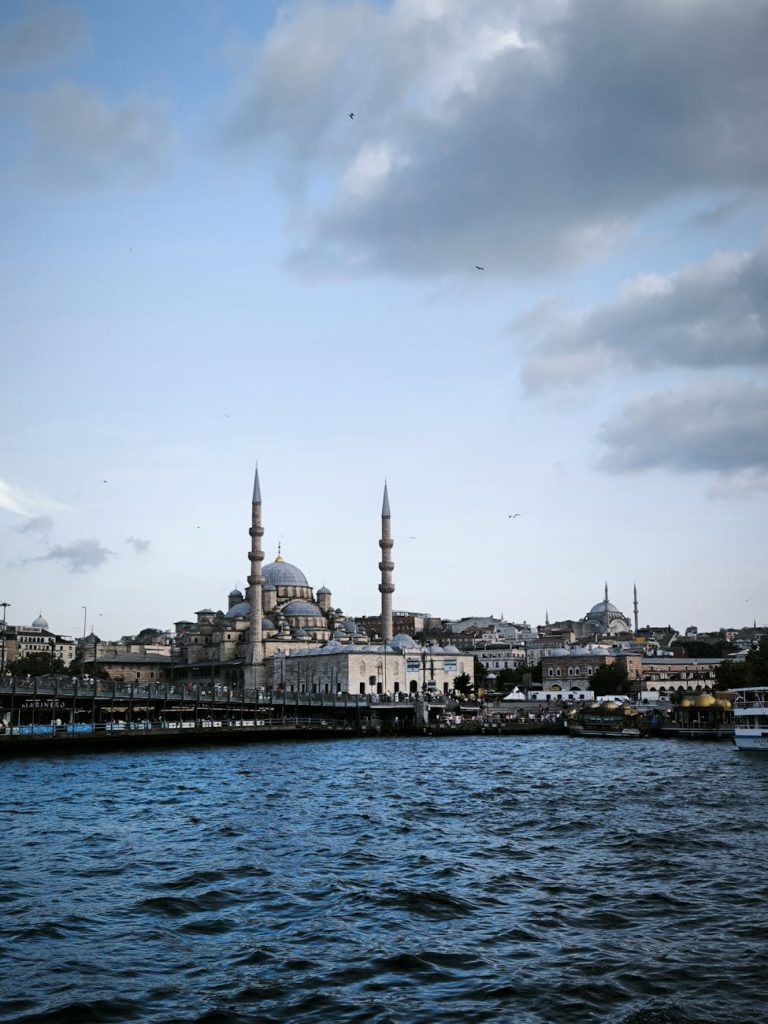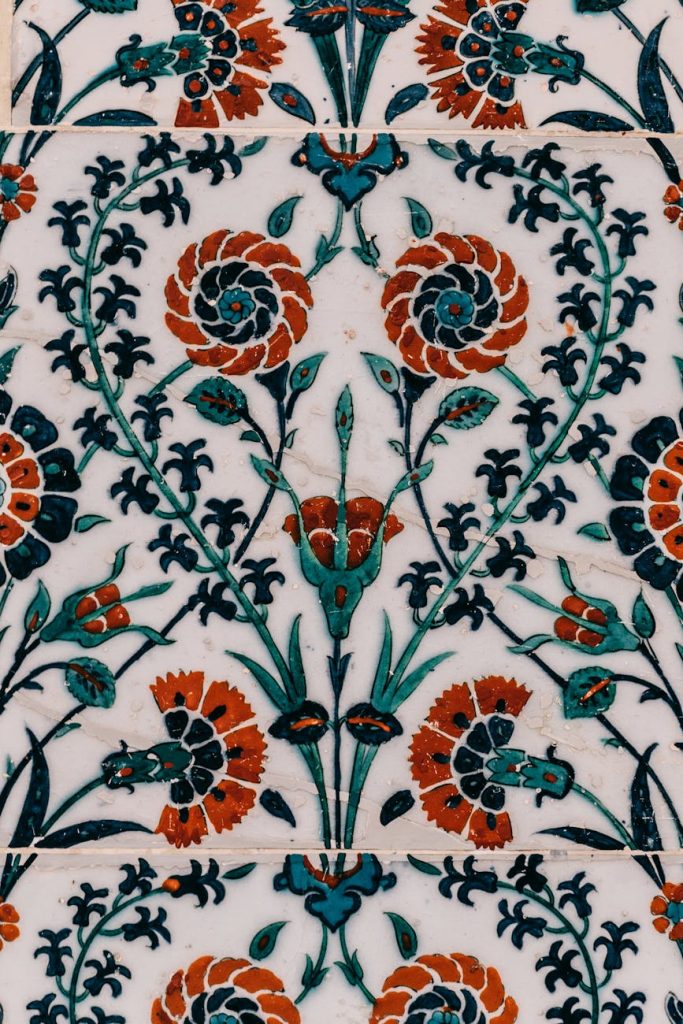
History & Significance
The Blue Mosque, officially known as Sultan Ahmed Mosque, is one of Istanbul’s most iconic landmarks. Completed in 1616 under the reign of Sultan Ahmed I, this masterpiece of Ottoman architecture symbolizes the zenith of the empire’s architectural achievement and reflects the significance of Istanbul in the Islamic world. The mosque was built to rival the grandeur of Ayasofya (Hagia Sophia) and has become a prominent place of worship, as well as a significant tourist attraction.
The mosque’s name, “Blue Mosque,” derives from the vibrant blue tiles that adorn its interior. The mosque is not only a site for daily prayers but also a center for learning and community gatherings, highlighting its role in the spiritual and social fabric of Istanbul. Its creation marked a pivotal moment in Islamic architecture, merging styles and techniques to reflect the cultural and religious diversity of the time.
Ottoman Architecture Highlights
The Blue Mosque is a stunning example of Ottoman architecture, characterized by its grand scale and intricate design. Key features include:
- Domes and Minarets: The mosque boasts a large central dome flanked by semi-domes, which create an awe-inspiring visual effect. The mosque has six minarets, a rare feature for mosques, and emblematic of its importance.
- Courtyard: The expansive courtyard is one of the largest in Istanbul, surrounded by a beautiful colonnade. This open space enhances the mosque’s grandeur and provides a serene environment for reflection and prayer.
- Interior Design: With over 20,000 handmade ceramic tiles in shades of blue, the interior walls exhibit intricate patterns that are both aesthetically pleasing and spiritually uplifting. The harmonious blend of geometric patterns and floral motifs is quite distinct in Ottoman architecture, and they serve to inspire contemplation and devotion.
The combination of traditional Islamic architectural elements and innovative designs reflects the wealth and artistic skills of the Ottoman Empire during its peak [1].
Interior Domes & Calligraphy
Upon entering the Blue Mosque, visitors are often struck by the breathtaking interior. The grand central dome rises to a height of 43 meters and is balanced by several smaller domes, flooded with natural light from the numerous windows that create a serene atmosphere.
- Calligraphy: The mosque is adorned with beautiful Arabic calligraphy that includes verses from the Quran. These inscriptions not only enhance the aesthetic appeal but also serve a spiritual purpose by reminding visitors of the teachings of Islam.
- Prayer Niche: The mihrab, or prayer niche, is intricately decorated, guiding worshippers towards Mecca. It is another critical focal point of the mosque, highlighting the importance of direction in Islamic prayer.
The delicate interplay between light, space, and decoration inside the mosque creates a spiritual environment that draws both worshippers and tourists alike looking to connect with the deeper significance of the space [2].
Visitor Etiquette & Prayer Times
Visiting the Blue Mosque offers a unique opportunity to experience Islamic culture first-hand. Here are essential etiquette tips for visitors:
- Modest Dress: It is crucial to dress modestly when visiting the mosque. Women are required to cover their heads, shoulders, and knees, while men should avoid shorts.
- Silence and Respect: As a place of worship, visitors should maintain a respectful silence. Avoid using mobile phones or engaging in loud conversations.
- Prayer Times: The mosque is open to tourists outside of prayer times. During prayer sessions, it is primarily reserved for worshippers. Visitors should check local schedules to ensure their visit does not coincide with these times [3].
Nearby Attractions
While the Blue Mosque is a highlight, the surrounding area also offers various attractions worth exploring:
- Hagia Sophia: Just a short walk away, this former cathedral-turned-mosque is renowned for its magnificent dome and rich history.
- Topkapi Palace: The opulent residence of the Ottoman sultans showcases exquisite architecture and beautiful gardens, allowing visitors to delve deeper into the empire’s history.
- Basilica Cistern: This underground cistern features impressive Byzantine architecture and is an excellent example of Istanbul’s historical engineering marvels.
Exploring these attractions can provide visitors with a richer understanding of Istanbul’s history and its pivotal role at the crossroads of continents and cultures.
Conclusion
The Blue Mosque stands not only as a symbol of Istanbul but also as a testament to the artistry and spirituality of Islamic architecture. With its rich history, stunning design, and cultural significance, it draws millions of visitors from around the world. By respecting the mosque’s sacredness through proper etiquette and understanding its architectural highlights, guests can fully appreciate this magnificent landmark. The surrounding sites only enhance the experience, making a visit to the Blue Mosque an unforgettable highlight of any trip to Turkey.
References
Get epic product battles straight to you! 🥊 📦 ![]()

